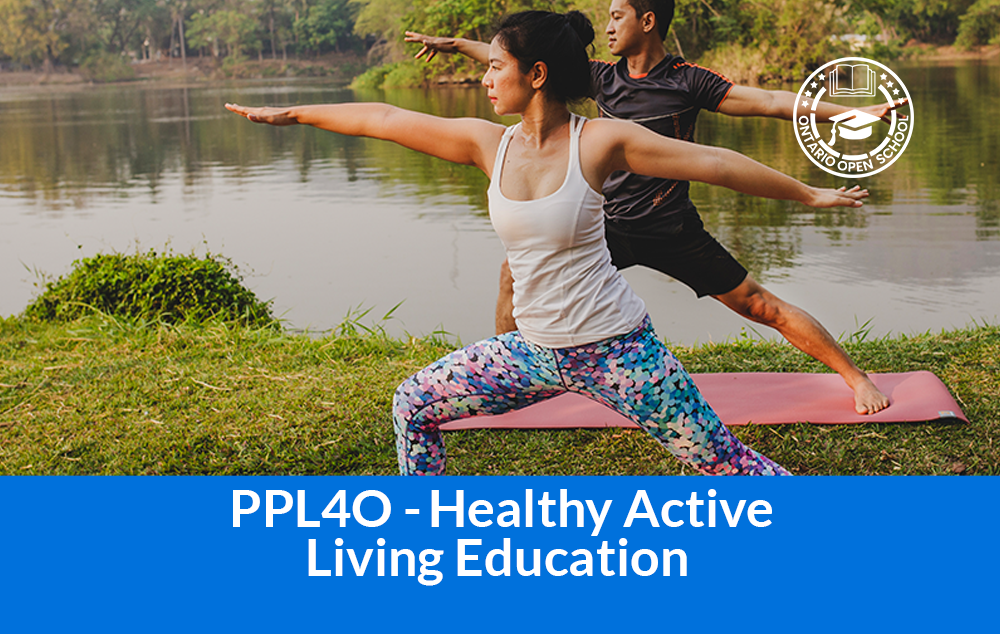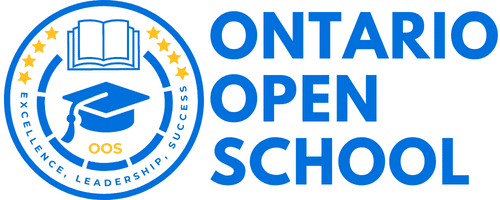- info@ontarioopenschool.com
- 647-494-4499
-
Unit 100 - 29 Gervais Drive, North York, ON.
M3C 1Y9
Copyright 2024 Ontario Open School Inc. All Rights Reserved.
This course enables students to further develop the knowledge and skills they need to make healthy choices now and lead healthy, active lives in the future. Through participation in a wide range of physical activities, students develop knowledge and skills related to movement competence and personal fitness that provide a foundation for active living. Students also acquire an understanding of the factors and skills that contribute to healthy development and learn how their own well-being is affected by, and affects, the world around them. Students build their sense of self, learn to interact positively with others, and develop their ability to think critically and creatively.
Unit Order | Unit Name | Suggested Time |
|---|---|---|
| Unit 1 | Unit 1: Introduction to Healthy Active Living and Physical Fitness In this unit, students will review concepts learned in previous Healthy Active Living courses and discuss what factors influence the level of physical a person participates in. Baseline fitness testing and goal setting will also be done at this time. Concepts such as group leaders and group dynamics will be discussed look at as well as possible careers related to healthy active living | 25 hours |
| Unit 2 | Unit 2: Healthy Growth and Sexuality Students will learn about reproductive health and the factors that can affect their reproductive health such as STI’s and environmental factors. Additionally, students will identify and research agencies/services that provide information related to reproductive health. | 25 hours |
| Unit 3 | Unit 3: Mental Health and Stress Management In this unit, students will analyze the factors that influence mental health, identify and describe signs of suicide, and demonstrate skills that enhance personal mental health, particularly related to dealing with stress in a positive and safe manner. | 25 hours |
| Unit 4 | Unit 4: Safety and Decision Making Students will examine risky behaviours and how they relate to injuries sustained by adolescents. Additionally, students will examine the causes and impacts of relationship violence. Finally, students will examine decision making techniques and apply them to situations that teens typically face such as choosing not to use drugs or alcohol. | 25 hours |
| Final Evaluation 30% | Final Assignment: I.S.U. Final Exam | 8 hours 2 hours |
| Total | 110 Hours |
A wide variety of instructional strategies are used to provide learning opportunities to accommodate a variety of learning styles, interests and ability levels. These strategies include, but are not limited to:
|
Strategies marked with “x” are used in the course. |
|||
| Direct Instruction (teacher-led) | x | Class Activity (teacher facilitation) |
x |
| Experiential learning (Learn by doing) | x | ||
| Class Discussion (teacher facilitated) | x | Worksheets/Surveys |
x |
| Individual or Group Research | |||
| Partner Discussion/Conferencing | x | Teacher modeling |
|
|
1:1 Conferencing Teacher & Student |
x | Text-based modeling | |
| Teacher reading to class | x | Use of Computers / Internet Silent individual reading |
x |
|
Silent individual reading |
x | Use of video tape or audio materials | x |
|
Group based reading |
Role Playing |
||
| Independent Work (teacher facilitation) | Presentations |
x |
|
|
Group Work (teacher facilitation) |
x | Guest Speaker/Interview/Questions | |
| Brainstorming | Field Trip |
|
|
Purpose
The primary purpose of assessment is to improve student learning. Assessment relates directly to the expectations for the course.
A variety of assessments for and as learning are conducted on a regular basis to allow ample opportunities for students to improve and ultimately demonstrate their full range of learning and for the teacher to gather information to provide feedback. Assessment tasks relate to the success criteria set out in lesson plans. Success criteria allow students to see what quality looks like.
Evaluation is the process of judging the quality of student work in relation to the achievement chart categories and criteria and assigning a percentage grade to represent that quality. Evaluation is based on gathering evidence of student achievement through:
Assessment for Learning – we provide feedback and coaching. Assessment FOR Learning is the process of seeking and interpreting evidence for the use of learners and their teachers to decide where the learners are in their learning, where they need to go, and how best to go there.
Assessment as Learning – we help students monitor progress, set goals, reflect on their learning
Assessment AS Learning is the process of the explicit fostering of students’ capacity over time to be their own best assessors, but teachers need to start by presenting and modeling external, structured opportunities for students to assess themselves.
Assessment of Learning – we use assessments to provide evaluative statements about student achievement. Assessment OF Learning is the assessment that becomes public and results in statements of symbols
(marks/grades/levels of achievement) about how well students are learning. It often contributes to pivotal decisions that will affect students’ future.
ASSESSMENT TOOLS
|
Assessment tools marked with “x” are used in the course |
|||
|
Marking schemes |
Rubrics |
x | |
|
Anecdotal comments |
x |
Checklists |
|
|
Rating Scales |
|
||
|
Assessment for Learning |
Assessment as Learning | Assessment of Learning | |||
| Quizzes | x | Reflective journal | Tests |
x |
|
|
Tests |
x | Exit and Entrance Cards | x | Presentations | |
| Presentations | KWL Chart | x | Journals |
|
|
|
Journals |
Self/Peer assessment | x | Essays | ||
| Essays | Logs | Models |
|
||
|
Models |
Projects | x | |||
| Projects | Demonstrations |
|
|||
|
Demonstrations |
Conferencing | ||||
| Conferencing | Questioning |
|
|||
|
Questioning |
Independent Study Assignment | x | |||
| Assignment | Art Exhibits |
|
|||
|
Art Exhibits |
Researching | ||||
| Researching | Final Exam |
|
|||
|
Reading Aloud |
Problem Solving (Process focused) | ||||
| Problem Solving | Independent Study Test |
x |
|||
|
Debates |
|||||
|
Work sheets |
|||||
|
Role playing |
|||||
|
Direct Instructions |
x | ||||
Resources
Grading
Weighting of categories
| Knowledge/Understanding | Thinking/Inquiry | Communication | Application |
| 25 % | 25 % | 25 % | 25 % |

Course Grade | Grade 12 |
|---|---|
Course Code | PPL4O |
Course Category | Health & Physical Education |
Course Type | Open |
Course Delivery | Online |
Course Duration | 110h |
Course Credit | 1.00 |
Copyright 2024 Ontario Open School Inc. All Rights Reserved.
